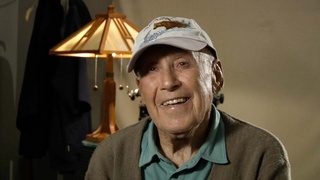Interviews
Enlisting in the U.S. Army (Japanese)
(Japanese) Yes, I was pleased [to be enlisted in the U.S. Army]. I was allowed into the U.S. Army, finished my basic training, and was coincidentally stationed back in Japan. So, part of it was because after joining the army and going to Japan, I was able to see my relatives and friends in Japan—I thought, “What can possibly be better than this?” (laughs). …Compared to the Japanese military, American military was fun. For things you might get disciplined for in the Japanese military, you could get away with in the American military. I got in trouble, 2, 3 times, but so did everyone else. I’ll explain some of it later. Anyway, as a youngster in Japan… there were a few arrogant men who spoke callously to me before [while in the Japanese military], but now there they were in front of me, bowing their heads down, as I stood before them in my American uniform. I’d never felt so good before (laughs). That’s one of the things I remember.
Date: June 17, 2008
Location: California, US
Interviewer: Yoko Nishimura
Contributed by: Watase Media Arts Center, Japanese American National Museum
Explore More Videos


General Ryder’s faith in the 100th infantry battalion
(1919 - 2006) World War II and Korean War veteran


Coming to California
(1916 - 2013) Member of the U.S. Military Intelligence Service

Learning Japanese with the MIS
(1916 - 2013) Member of the U.S. Military Intelligence Service

Meeting Hamako in Japan
(1916 - 2013) Member of the U.S. Military Intelligence Service

Miscommunications
(1916 - 2013) Member of the U.S. Military Intelligence Service

Writing Letters
(1916 - 2013) Member of the U.S. Military Intelligence Service

Meeting Mr. Amano
(1916 - 2013) Member of the U.S. Military Intelligence Service

Marriage and Returning to US
(1916 - 2013) Member of the U.S. Military Intelligence Service

Reception of Hamako by family
(1916 - 2013) Member of the U.S. Military Intelligence Service

Joining the army
(1919 - 2015) Nisei who served in World War II with the 442nd Regimental Combat Team

Generosity of the Italians
(1919 - 2015) Nisei who served in World War II with the 442nd Regimental Combat Team

Animosity between the Hawaiians and the mainlanders
(1919 - 2015) Nisei who served in World War II with the 442nd Regimental Combat Team

Being scared during combat
(1919 - 2015) Nisei who served in World War II with the 442nd Regimental Combat Team
